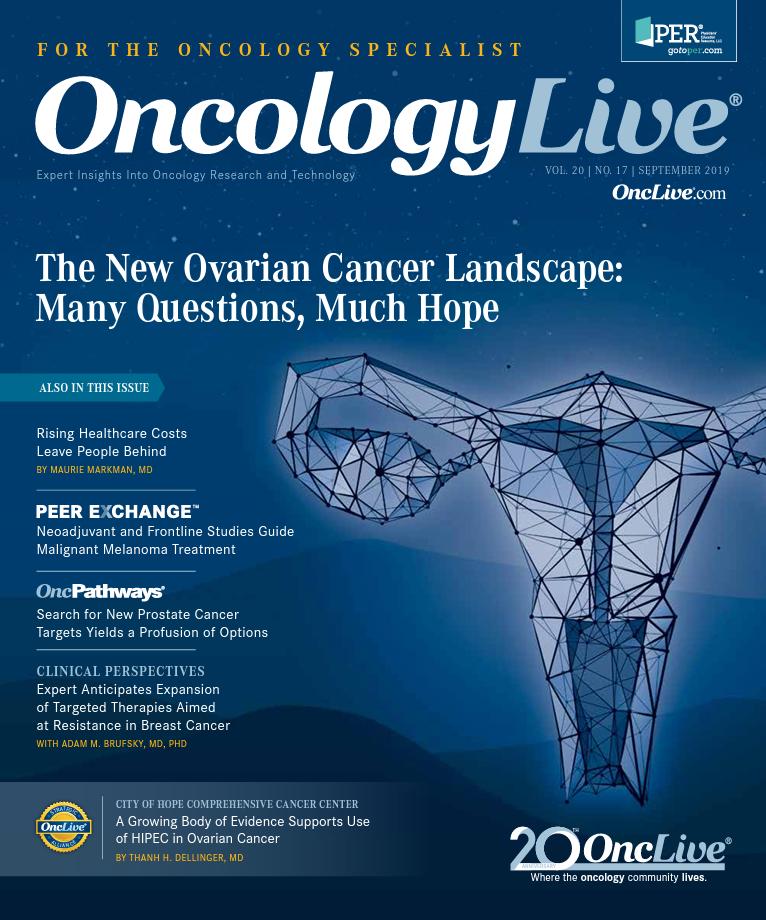Immune Checkpoint Inhibitors Correlate With Specific Neurologic Events
Use of immune checkpoint inhibitors was clearly associated with higher incidences of specific neurologic toxicities in a broad-based retrospective pharmacovigilance study, and clinicians need to monitor for these immune-related adverse events when using these agents.
Use of immune checkpoint inhibitors (ICIs) was clearly associated with higher incidences of specific neurologic toxicities in a broad-based retrospective pharmacovigilance study, and clinicians need to monitor for these immune-related adverse events (irAEs) when using these agents, investigators said.
Investigators assessed the character and frequency of neurologic irAEs in those treated with anti—PD-1–, PD-L1–, and CTLA-4–targeted antibodies. They said ICI use led to higher incidence of neuromuscular junction dysfunction (myasthenia gravis), noninfectious encephalitis and/or myelitis, cerebral artery vasculitis, peripheral neuropathy, and noninfectious meningitis (Table).
Table. Prevalence of Neurologic AEs in Patients Treated With ICIsa (Click to Enlarge)

Investigators limited their study of neurologic irAEs to those suspected to have been caused by ICIs and identified increases in neurologic events after ICI therapy. Myasthenia gravis accounted for 0.47% of ICI reports versus 0.04% of the full database (reporting odds ratio [ROR], 16.5); encephalitis or myelitis, 0.51% versus 0.05% (ROR, 10.4); peripheral neuropathy, 1.16% versus 0.67%; cerebral artery vasculitis, 0.07% versus 0.01% (ROR 10.6); and noninfectious meningitis, 0.15% versus 0.06% (ROR, 3.1).
Neurologic toxicities were “substantially” more common in men than women, respectively: myasthenia gravis, 60.98% versus 39.02%; encephalitis/myelitis, 63.35% of versus 36.94; Guillian-Barre syndrome, 65.74% versus 34.26%; noninfectious meningitis, 53.03% versus 46.97%.
Age was a factor in neurologic irAEs: Encephalitis/myelitis and meningitis presented more frequently in younger patients (median ages 58.6 and 56.3 years, respectively) compared with myasthenia gravis and GBS (70.3 and 65 years, respectively).
Neurologic events tended to occur within the first 3 months after ICI initiation. However, myasthenia gravis had a more rapid onset (median, 29 days) than other events (median, 61-80 days; P <.001). Patients with myasthenia gravis also had the highest fatality rate (44/228; 19.3%). In addition, myasthenia gravis was more often associated with anti—PD-1/PD-L1 therapy than anti–CTLA-4 agents (ROR 3.9; 95% CI, 2.3-6.8), and noninfectious encephalitis/myelitis was more common in those who received anti–PD-1/ PD-L1 ICIs versus anti-CTLA-4 agents (ROR, 2.5; 95% CI, 1.6-3.9). Myasthenia gravis and encephalitis/ myelitis occurred more often in patients with lung cancer, and GBS and meningitis were more frequent in the melanoma setting.
Investigators said broader exploration will be crucial because ICIs are being used more frequently and patients who respond to them are living longer.
Johnson DB, Monouchehri A, Haugh AM, et al. Neurologic toxicity associated with immune checkpoint inhibitors: a pharmacovigilance study. J Immunother Cancer. 2019;7(1):134. doi: 10.1186/s40425-019-0617-x.
Using de-identified individual case safety reports (ICSRs) from the World Health Organization’s (WHO) pharmacovigilance database, VigiBase, investigators performed a disproportionality analysis to determine whether neurologic events were more common with ICIs. Disproportionality analyses compare the proportion of specific AEs reported for an agent with the proportion of the same AEs for a control group. Disparities suggest possible associations between the agent and the AE(s). Of roughly 19 million ICSRs included in the study, 48,653 contained reports of ICI-associated AEs.




